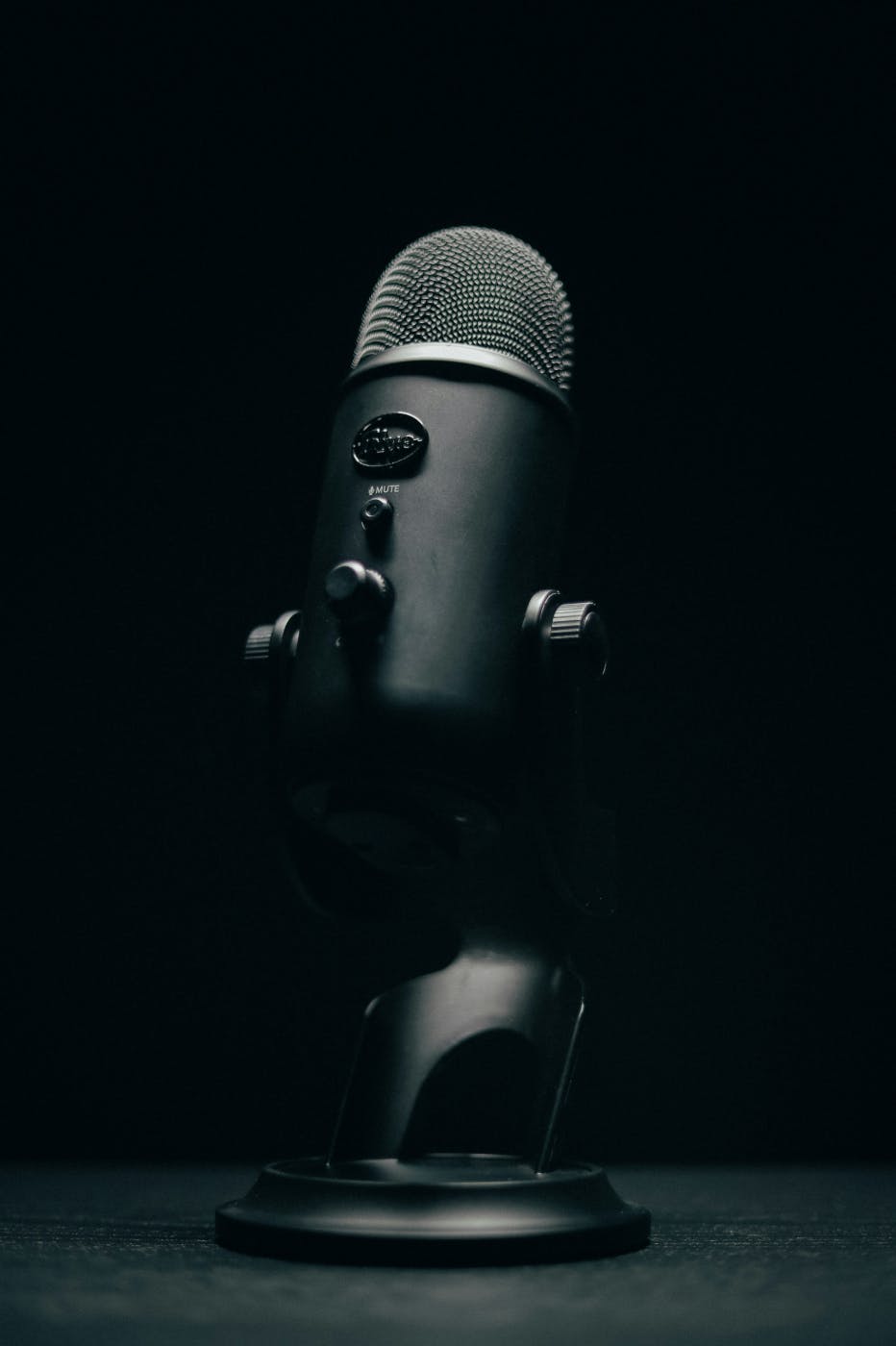
Tone is the emotional undercurrent of your brand’s language. It’s not just what you say, but how you make someone feel while you’re saying it.
The Mouse and the Motorcycle. What a book. I will never, ever forget Ms. Darrius reading us this book in the 3rd grade. I remember because it was the first time I heard a teacher use a voice that wasn’t stern, demanding, and cold. Ms. Darrius read through the errors with love and care. She did the sound effects, which I later learned were written right there in the book. The pbpbpbpb when the mouse mounted the toy motorcycle, and he learned that making the sound made the bike go. She used her voice to build dramatic moments. She used her voice to create soft, safe moments and joy when the mouse got into the toy ambulance and delivered the aspirin to the boy. Her voice, with its many tones, I recall even more than the story itself.
So much happened that week. I saw a teacher as a person, capable of emotion and storytelling. I learned that tone could be used and manipulated. And I learned that tone, used well, in conjunction with a compelling story, made the story even better. To this day, I find myself in shops or toy stores, and I will pick up a toy motorcycle and I will pbpbpbpb it across a shelf. The story is vague in my head: a mouse, a boy, a motorcycle, and the need for an aspirin to reduce a fever, but her tone and changes in that tone stay with me forever.
Tone is so important in storytelling, in life, and it’s even important, more than you’d expect, in branding.
I didn’t have the language for it then, but I knew what I felt: tone could shape a story. It could create tension, relief, joy, and memory. And it could leave an imprint that lasted far longer than the plot itself.
That’s true in life. It’s true in storytelling. And it’s especially true in branding.
In a world where most brands compete on features, visuals, or performance, the ones we remember—the ones we feel—often win on something softer. Something quieter. Something more human.
Tone.

What Brand Tone Actually Is
Most people mistake brand tone for messaging. Or for personality. Or for copy that “sounds friendly.”
It’s none of those things exactly—and also all of them, in the right context.
Tone is the emotional undercurrent of your brand’s language. It’s not just what you say, but how you make someone feel while you’re saying it. It’s how your words land. What they trigger. What they echo. It’s the aftertaste of communication.
- It’s rhythm.
- It’s weight.
- It’s breath.
- It’s knowing when to hold back and when to lean in.
Tone is what tells someone, without needing to explain, “You’re safe here.” Or “We see you.” Or “We’re not like the others.” It’s the unspoken contract beneath the actual words.
And unlike messaging—which is built to persuade—tone is built to relate.
That’s what most brands miss. They focus on clarity, efficiency, and consistency. But people don’t connect with efficiency. They connect with signals. With nuance. With that barely perceptible shift in language that makes them feel understood.
Tone is where that shift happens.
It’s what makes an apology land with grace instead of legalese.
It’s what makes a support email sound human instead of automated.
It’s what makes a call-to-action feel like an invitation instead of a demand.
Great tone isn’t about volume. It’s about presence.
And when it’s done well, the audience may not even notice it outright. But they’ll remember how it made them feel. They’ll know something was different. Warmer. Realer. And they'll come back, not because they were persuaded, but because they were seen.
Tone, in other words, is not a layer. It’s the shape of the voice. And the voice is the soul of the brand.
For a long time, tone was treated like a finishing touch—something you add after the strategy is set and the message is clear. But that’s no longer enough.
In a world of brand sameness and algorithmic language, tone has quietly become one of the last signals that still feels human.
And that shift isn’t just aesthetic. It’s strategic.
Let’s look at why tone matters now more than ever.
So, if tone is one of the last real levers we have to make a brand feel human, the next question is: how does it actually work?
What makes one brand’s voice feel effortless while another’s feels forced? What gives some messages that sense of warmth, wit, or quiet confidence—even when they’re saying the same thing?
It comes down to the mechanics—the choices beneath the words. The signals most people never see—but always feel.

The Subtle Mechanics of Tone
Tone isn’t a trick. It’s not a style you paste on at the end. It’s the sum of small choices—over and over—that shape how a brand feels in someone’s mind.
It’s sentence length.
It’s rhythm and breath.
It’s how much space you leave between thought and action.
It’s whether your brand uses exclamation points like a golden retriever or like a threat.
These things add up.
Because tone is built not just from what’s said, but from how it’s built.
Tone lives in structure.
A long, winding sentence might invite reflection.
A short one drives urgency.
Fragments add intimacy. And silence—space between thoughts—can say more than adjectives ever could.
Tone lives in timing.
Is your brand quick to speak? Or does it take its time? Is your call-to-action a tap on the shoulder or a fire alarm?
Tone lives in tension.
Great tone often holds two things at once: confidence and humility. Humor and depth. Precision and ease. These tensions give a voice dimension, and dimension is what makes it memorable. More on this, cause it can be confusing, in a moment.
Tone lives in restraint.
The best voices know what not to say. They don’t over-explain. They trust the reader’s intelligence. They don’t try too hard to be liked and end up being respected.
Great tone doesn’t draw attention to itself. It draws attention to the feeling it leaves behind.
That’s what makes it hard to copy.
It’s not a formula. It’s a fingerprint.
And the brands that get tone right don’t just sound different.
They sound intentional.
And in a world of semi-generated language and lifeless copy, that kind of intentionality is rare—and powerful.
A Note on Tension
Tension in tone doesn’t mean conflict. It means range. It’s the interplay between qualities that don’t usually live side by side, and when they do, it makes the voice feel layered and real.
Think of a brand voice that’s both:
- Confident and self-aware
- Witty but never flippant
- Helpful without being condescending
- Warm, yet precise
That’s tension. And it works because people are complex, and they respond to voices that feel like they were written by someone who understands complexity.
Tension creates an emotional dimension. It makes a brand voice feel like it has lived a little. It’s what keeps things from feeling flat, predictable, or overly polished.
In short, tension gives tone character. And character is what readers connect to.

Voice as Differentiator, Not Decoration
Too many brands treat tone as window dressing—something to apply after the positioning is locked and the messaging is approved. A coat of charm. A dusting of humanity.
But tone isn’t decoration.
It’s differentiation.
Tone is how a brand signals its worldview, its maturity, its values, and its audience, without ever naming them outright. It's the subtext that builds trust. It's repetition that builds memory. And in a world where competitors can match your features, your price, even your mission, your voice might be the only thing left that can’t be copied.
Great brand tone becomes a kind of gravity. It pulls everything else into alignment—design, content, service, culture. It gives people a feeling they can return to, even when they’re not in the market.
This is why the best brand voices aren’t just expressive.
They’re strategic assets.
A strong tone:
- Builds recall faster than a list of product benefits
- Creates consistency across a messy, multi-touch world
- Becomes a recognizable signal in places the logo can’t follow
- Turns customer experience into brand experience
When done well, tone becomes so embedded that people recognize you before introducing yourself. They hear you in their heads before they click.
That’s not copywriting. That’s identity.
But if tone is this powerful—if it’s not just an add-on but an anchor—then the real work isn’t just recognizing its value.
It’s knowing how to shape it. And how to protect it as you scale, evolve, and stretch your brand across more voices, more channels, and more moments.
Let’s talk about how that’s done.

How to Shape (and Protect) Brand Tone
A strong brand tone doesn’t happen by accident. It’s not the byproduct of a clever writer or a punchy campaign. It’s built—deliberately, carefully, and over time.
Here’s how to do it:
1. Don’t define your tone in adjectives. Define it in emotions.
“Sincere, optimistic, bold.” Sounds nice—but what does that feel like to a reader? Instead, anchor your tone in the emotions you want to evoke. Do you want people to feel reassured? Seen? Amused? Respected? Start there. Write to that.
2. Build a tonal spine, not a list of examples.
Your voice guidelines shouldn’t just say, “Use contractions” or “Avoid jargon.” They should teach your team how to think in the brand’s voice. Include reasoning, not just rules. Help them understand the why behind the sound.
3. Start small and scale up.
Don’t wait until the campaign launch. Test your tone in low-risk, high-frequency places—social captions, product descriptions, confirmation pages. Build internal trust before you build external consistency.
4. Hire people who can hear it.
Writers, strategists, editors—anyone touching language needs to have an ear for tone. It’s not about cleverness. It’s about control, rhythm, and emotional precision. Voice isn’t just what they say—it’s what they feel when they write.
5. Protect it like IP.
As your brand grows, more people will write on your behalf. That’s a good thing. But it only works if you have strong systems in place to protect the voice you’ve built. Train new writers. Update guidelines. Review regularly. Don’t let clarity become conformity.
Tone isn’t static. It’s a living system.
And the brands that shape it well don’t just sound different.
They feel intentionally alive.
Summing Up: The Brand You Hear, Even When It’s Quiet
When we talk about brand tone, we’re really talking about presence.
Not presence like volume or visibility, but presence as in: someone is really here. Someone is paying attention. Someone is speaking in a way that acknowledges another person is listening.
That’s what great tone does.
It closes the gap.
It makes a brand feel less like a system and more like a signal.
In an era of infinite content and interchangeable products, tone is one of the few things a brand can truly own. It’s not easily benchmarked. It’s hard to replicate. It’s deeply felt. And when it’s done right, it becomes something even bigger than a voice.
It becomes a memory.
At ThoughtLab, we help brands find that voice, not as a flourish, but as a foundation.
Because in the end, tone isn’t what makes people buy.
It’s what makes them believe.

